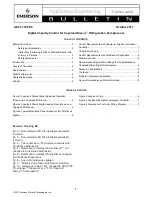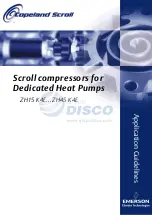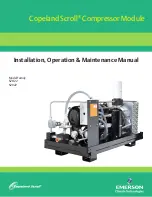
5
5#('6;24'%#76+105(142146#$.'%1/24'55145
7REHUHDGDWWHQWLYHO\DQGDFWHGDFFRUGLQJO\EHIRUHWRZLQJOLIWLQJRSHUDWLQJSHUIRUPLQJPDLQWHQDQFHRUUHSDLULQJWKHFRPSUHVVRU
+
0641&7%6+10
The policy of Atlas Copco is to provide the users of their equipment with
safe, reliable and efficient products. Factors taken into account are among
others:
-
the intended and predictable future use of the products, and the
environments in which they are expected to operate,
-
applicable rules, codes and regulations,
-
the expected useful product life, assuming proper service and
maintenance,
-
providing the manual with up-to-date information.
Before handling any product, take time to read the relevant instruction
manual. Besides giving detailed operating instructions, it also gives specific
information about safety, preventive maintenance, etc.
Keep the manual always at the unit location, easy accessible to the operating
personnel.
See also the safety precautions of the engine and possible other equipment,
which are separately sent along or are mentioned on the equipment or parts
of the unit.
These safety precautions are general and some statements will therefore not
always apply to a particular unit.
Only people that have the right skills should be allowed to operate, adjust,
perform maintenance or repair on Atlas Copco equipment. It is the
responsibility of management to appoint operators with the appropriate
training and skill for each category of job.
6NLOOOHYHO
2SHUDWRU
An operator is trained in all aspects of operating the unit with the push-
buttons, and is trained to know the safety aspects.
6NLOOOHYHO
0HFKDQLFDOWHFKQLFLDQ
A mechanical technician is trained to operate the unit the same as the
operator. In addition, the mechanical technician is also trained to perform
maintenance and repair, as described in the instruction manual, and is
allowed to change settings of the control and safety system. A mechanical
technician does not work on live electrical components.
6NLOOOHYHO
(OHFWULFDOWHFKQLFLDQ
An electrical technician is trained and has the same qualifications as both the
operator and the mechanical technician. In addition, the electrical technician
may carry out electrical repairs within the various enclosures of the unit.
This includes work on live electrical components.
6NLOOOHYHO
6SHFLDOLVWIURPWKHPDQXIDFWXUHU
This is a skilled specialist sent by the manufacturer or its agent to perform
complex repairs or modifications to the equipment.
In general it is recommended that not more than two people operate the unit,
more operators could lead to unsafe operating conditions. Take necessary
steps to keep unauthorized persons away from the unit and eliminate all
possible sources of danger at the unit.
When handling, operating, overhauling and/or performing maintenance or
repair on Atlas Copco equipment, the mechanics are expected to use safe
engineering practices and to observe all relevant local safety requirements
and ordinances. The following list is a reminder of special safety directives
and precautions mainly applicable to Atlas Copco equipment.
These safety precautions apply to machinery processing or consuming air.
Processing of any other gas requires additional safety precautions typical to
the application and are not included herein.
Neglecting the safety precautions may endanger people as well as
environment and machinery:
-
endanger people due to electrical, mechanical or chemical influences,
-
endanger the environment due to leakage of oil, solvents or other
substances,
-
endanger the machinery due to function failures.
All responsibility for any damage or injury resulting from neglecting these
precautions or by non-observance of ordinary caution and due care required
in handling, operating, maintenance or repair, also if not expressly
mentioned in this instruction manual, is disclaimed by Atlas Copco.
The manufacturer does not accept any liability for any damage arising from
the use of non-original parts and for modifications, additions or conversions
made without the manufacturer’s approval in writing.
If any statement in this manual does not comply with local legislation, the
stricter of the two shall be applied.
Statements in these safety precautions should not be interpreted as
suggestions, recommendations or inducements that it should be used in
violation of any applicable laws or regulations.
)
'0'4#.
5#('6;
24'%#76+105
1
The owner is responsible for maintaining the unit in a safe operating
condition. Unit parts and accessories must be replaced if missing or
unsuitable for safe operation.
2
The supervisor, or the responsible person, shall at all times make sure
that all instructions regarding machinery and equipment operation and
maintenance are strictly followed and that the machines with all
accessories and safety devices, as well as the consuming devices, are in
good repair, free of abnormal wear or abuse, and are not tampered with.
3
Whenever there is an indication or any suspicion that an internal part of
a machine is overheated, the machine shall be stopped but no inspection
covers shall be opened before sufficient cooling time has elapsed; this to
avoid the risk of spontaneous ignition of oil vapour when air is admitted.
4
Normal ratings (pressures, temperatures, speeds, etc.) shall be durably
marked.
5
Operate the unit only for the intended purpose and within its rated limits
(pressure, temperature, speeds, etc.).
6
The machinery and equipment shall be kept clean, i.e. as free as possible
from oil, dust or other deposits.
7
To prevent an increase in working temperature, inspect and clean heat
transfer surfaces (cooler fins, intercoolers, water jackets, etc.) regularly.
See the maintenance schedule.
8
All regulating and safety devices shall be maintained with due care to
ensure that they function properly. They may not be put out of action.
9
Care shall be taken to avoid damage to safety valves and other pressure-
relief devices, especially to avoid plugging by paint, oil coke or dirt
accumulation, which could interfere with the functioning of the device.
10 Pressure and temperature gauges shall be checked regularly with regard
to their accuracy. They shall be replaced whenever outside acceptable
tolerances.
11 Safety devices shall be tested as described in the maintenance schedule
of the instruction manual to determine that they are in good operating
condition.
12 Mind the markings and information labels on the unit.
13 In the event the safety labels are damaged or destroyed, they must be
replaced to ensure operator safety.
14 Keep the work area neet. Lack of order will increase the risk of
accidents.
15 When working on the unit, wear safety clothing. Depending on the kind
of activities these are: safety glasses, ear protection, safety helmet
(including visor), safety gloves, protective clothing, safety shoes. Do not
wear the hair long and loose (protect long hair with a hairnet), or wear
loose clothing or jewelry.
16 Take precautions against fire. Handle fuel, oil and anti-freeze with care
because they are inflammable substances. Do not smoke or approach
with naked flame when handling such substances. Keep a fire-
extinguisher in the vicinity.
Summary of Contents for XA146 Dd
Page 2: ... 5 5 2 ...






































